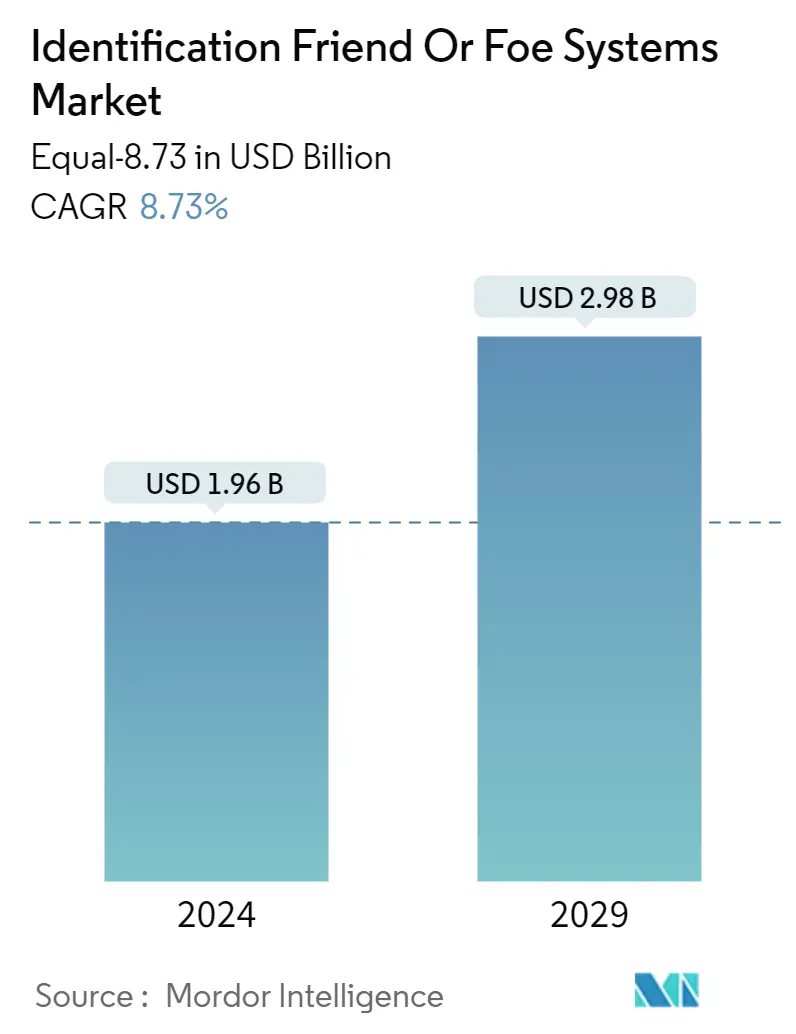Market Size of Identification Friend Or Foe Systems Industry

| Study Period | 2019-2029 |
| Market Size (2024) | USD 1.96 Billion |
| Market Size (2029) | USD 2.98 Billion |
| CAGR (2024 - 2029) | 8.73 % |
| Fastest Growing Market | Asia Pacific |
| Largest Market | North America |
Major Players
*Disclaimer: Major Players sorted in no particular order |
Need a report that reflects how COVID-19 has impacted this market and its growth?
Identification Friend or Foe System Market Analysis
The Identification Friend Or Foe Systems Market size in terms of Equal-8.73 is expected to grow from USD 1.96 billion in 2024 to USD 2.98 billion by 2029, at a CAGR of 8.73% during the forecast period (2024-2029).
The market for identification systems for defense is propelled by several key drivers, reflecting the growing need for advanced and secure identification technologies in military applications. One significant driver is the increasing emphasis on enhancing situational awareness and preventing friendly fire incidents. Advanced identification systems enable military forces to accurately distinguish between friend and foe on the battlefield, reducing the risk of unintended engagements. The integration of biometric technologies, such as facial recognition and fingerprint scanning, contributes to the development of more robust and reliable identification systems. These systems provide military personnel with real-time information about the identity and status of individuals, enhancing decision-making processes and overall mission effectiveness. Additionally, the integration of identification systems with command and control (C2) systems supports seamless coordination and communication among military units, leading to improved operational efficiency.
One significant restraint is the potential ethical and privacy concerns associated with the use of advanced biometric technologies. Striking a balance between military necessity and individual rights raises challenges, especially as identification systems become more intrusive. Addressing these concerns is crucial to gaining public acceptance and regulatory approval.
Technological advancements and the convergence of various technologies, including artificial intelligence (AI) and machine learning, drive innovation in identification systems. AI algorithms enhance the accuracy and speed of identification processes, adapting to evolving threat landscapes. Moreover, the integration of identification systems with unmanned systems, such as drones and autonomous vehicles, enhances the overall capabilities of military forces.
